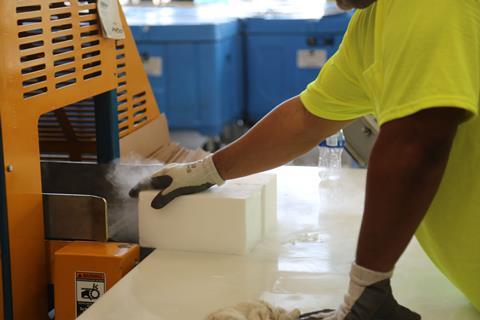


Dry ice producers, distributors and equipment makers are bracing themselves for a spike in demand next year, with concerns there will be a tightening in the availability of dry ice for storage and distribution of coronavirus (Covid-19) vaccines.
After a vaccine is declared ready, then comes the challenge of delivering millions of doses at ultra-cold temperatures with the help of dry ice – solid form of carbon dioxide (CO2) – and cryogenic freezers which use liquid nitrogen.
Vaccines will need to be kept at temperatures as low as minus 70 or 80 degrees Celsius (minus 94 or 112 degrees Fahrenheit), and they may have to be shipped from one continent to another.
During their journey from pharmaceutical companies to hospitals and vaccination centres, the vaccines will be packed into containers of dry ice then loaded on to planes and trucks.
Huge orders are expected from transportation and logistics companies which will distribute vaccines in 2021. But after CO2 shortages across the US this year, many in the industry are asking: will we have enough dry ice?
Sam Rushing, President of Advanced Cryogenics and CO2 expert, told gasworld, ”Due to an increased demand for dry ice for shipment of food products, among other refrigerated items, particularly when adding to demands surrounding the pandemic, it is feared there will be a shortage of dry ice. Dry ice shortages are due to the liquid CO2 shortfall, largely driven by the drop in ethanol and reformer by-product of CO2 raw gas. A major independent stated that there are shortages of liquid and dry ice, again due to the effects of the pandemic. I am certain there will be a spike in demands for dry ice when vaccines are being shipped and where persistent liquid and dry ice shortages already exist.”
Dry ice is already in high demand in certain geographical areas in the US, with pharmaceutical firms requiring product as they research and test the coronavirus vaccine.
Rushing added, “Various companies, particularly distributors in some markets, such as in New England, say shortages of dry ice are acute. One such company indicated upon receipt of an order of dry ice from the supplier, their inventory disappears in three hours. It is certainly acute, on the supply side.”
But the Compressed Gas Association (CGA), whose members supply the vast majority of liquid CO2 in North America, expects sufficient dry ice supply for the US and Canada.
“According to CGA members, the current production capacity for carbon dioxide and dry ice is expected to be sufficient to meet anticipated demand from vaccine manufacturers,” CGA said in a post on its website.
“There is also potential capacity to increase production and distribution of dry ice for Covid-19 vaccines, if needed. CGA members report that the carbon dioxide production capacity in the US and Canada is 30,000 to 35,000 tonnes per day.”
The CGA added, “The key to maintaining dry ice supplies lies in vaccine manufacturers working closely with dry ice and carbon dioxide producers and distributors, as well as dry ice equipment manufacturers, to configure appropriate onsite storage and delivery capacities, in anticipation of growing demand.”
Dry ice companies are preparing for a busy 2021 by increasing liquid carbon dioxide storage, production equipment as well as shipping container inventory.